Artefacta conference
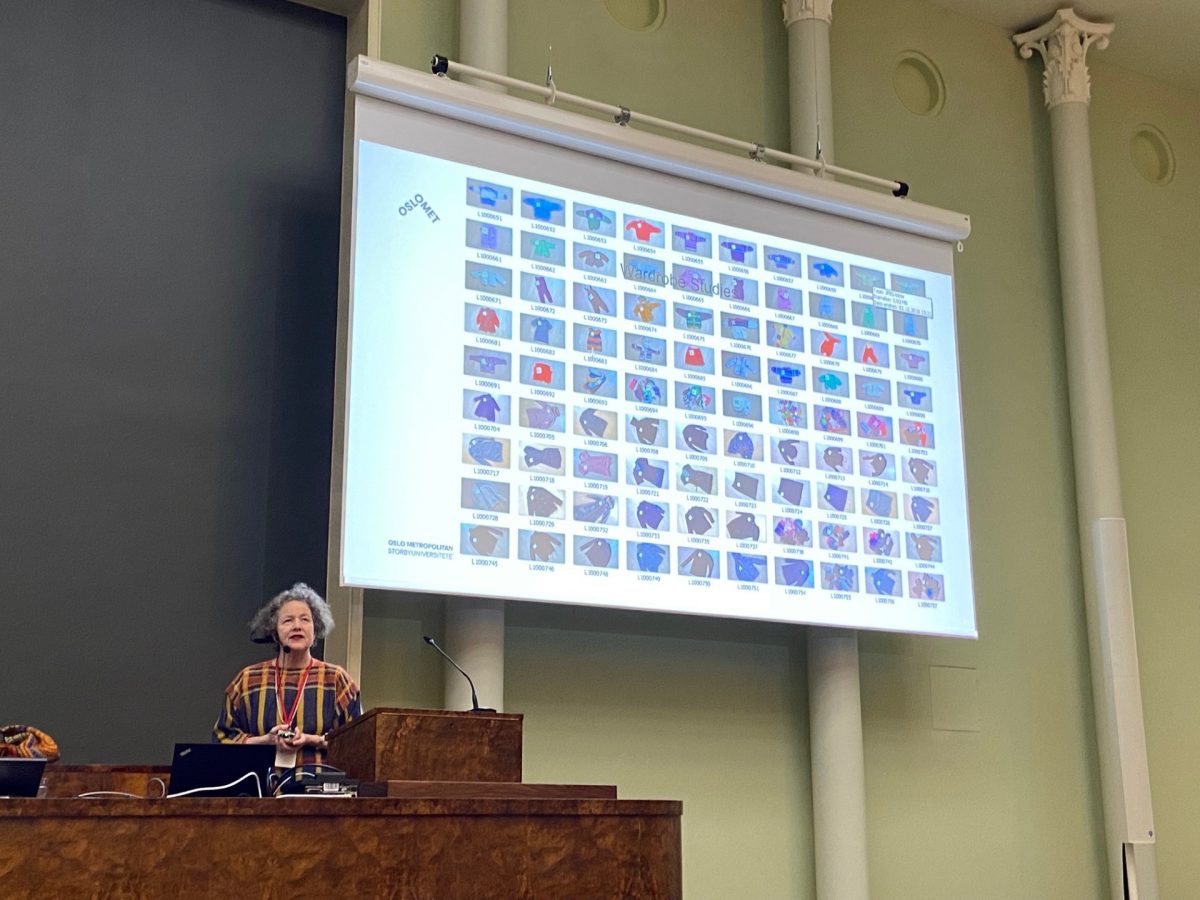
For the fourth time, University of Helsinki arranged the Artefacta conference. It brings together researchers and professionals interested in objects, material culture and our relationship to them (click here for full program helsinki.fi).
I had the great honor of opening the event with the talk “Product attachment in politics and wardrobes”. I described the development of the product-related research methods that Kirsi and I, and our colleagues at SIFO have worked with for close to 20 years. I also showed how the knowledge produced by such methods has become more relevant in the wake of emerging regulation aimed at apparel. It is a sad fact that as much as the EU quotes clothing research coming from SIFO in the knowledge summaries underpinning their policies, it is clear that they lack an actual understanding of our work. With that the potential for the polices to enact positive change (lower the environmental impact) is also greatly reduced.
The talk was well received. However, it would have been more fitting if I had based the talk on my cultural history knowledge and shown how this context had been important in my own research. Furthermore, I could have reflected around how a lot of what is talked and written about clothing and the environment, sadly, does not touch upon cultural history at all.
There is not enough time to do everything. The conference itself went more into depth on relationships and feelings than on the environment, climate, war, crises, with some exceptions. This gave a feeling of freedom. Many beautiful, empirical, thorough and thought-provoking presentations were presented. Being housed in the newly renovated main building of the university dating back to 1828-1832, our material surroundings could not have been more fitting, both spacious and stately. We moved between Greek statues and pillars with a view of the impressive view of the Storkyrkan standing right outside, built around the same time. Helsinki is a capital city, no doubt about it.
At the core of the Artefacta Conferences are objects and artefacts, as well as the materiality and material culture related to them. The Organising Committee, led by Riikka Räisänenin expressed that they welcomed “abstract proposals from all over the world and from interdisciplinary perspectives, including the fields of material culture studies, history, archaeology, anthropology, heritage science, conservation, craft science, art history, museology, ethnology, design and beyond”. Something they certainly succeeded in. Both the US and Australia made themselves known, and indeed the whole specter of artefact-adjacent disciplines were represented. From music historians who studied the chronology of different pieces starting with original sheets of music to art disseminators for an American museum specializing in aviation and space travel.
Thousand-year-old objects and perspectives on the future were presented. The latter was a great presentation by the only other Norwegian contribution to the program, by Georgina McDowal form Museums of Song og Fjordane. By positioning herself several hundred years in the future and describing how the archaeologist would have reported on the objects found at the bottom of the sea where Sogn og Fjordane is situated. The plastic life vest was perceived as a dangerous object and a symbol of the unrestrained use of plastic which has so prevalent in society in an unknown and uncomprehensible past.
The talk on “Is it Always Only Green” with Aarti Latkar and Neelakantan Poomangalath represented another reflection of plastic. They showed how in India, grass lawns are a symbol of the colonial times, with their sports and aesthetics, which is different from the associations in the western world. The meaning asides, it is interesting how grass spreads, most notably in the areas between inside and outside. It climbs on walls in the form of mats and can cover entire surfaces. “Plastification” was also a theme in her talk, and it was extensively covered.
There were many beautiful presentations, and a lot of work went in to the visual aspects, as mentioned previously. What is most striking in hindsight is how the presentation that I, and many other who I spoke with, will remember best was one without a single picture in it (including pictures of text). Julie Gorks was the speaker and she had conducted a wardrobe study on blind individuals’ wardrobes. “Blind touch: Feeling clothes as a material intimacy of blindness” omitted visuals completely out of the respect for the non-seeing members of society. She talked about how her participants experienced their clothes through smell and touch and how the sense of touched was used to “see” the garments, but also to get a feel of the garment. Colours had smells because of the pigments. The senses were present tenfold. Even the visual aspects had to be taken into account because the participants would be looked at by others. Their notion of colours, for instance, would be confronted with another way “to see”. This presentation was in the same session as Timo Rissanen’s talk on Australian leather title sashes and queer objects in museums’ collections.
This way, two marginalized groups and their material cultures were highlighted, showing the importance of research focused on smaller and specific phenomenon rather than the “normal” and “average”. The knowledge that comes out of this type of studies is valuable and can shed a light on aspects that can get lost in our daily lives. Doing research with differently abled individuals is one of many ways that could further clarify what it means to get and/or to be dressed. It was especially good to meet Timo again after approx. 20 years. The last we saw each other was at a conference which I helped arrange at OsloMet, long before we got that name. There is no digital evidence of the conference, but it is well remembered nonetheless.
Speaking of digital evidence (or lack thereof): The conference was brought to an end with the other key note speaker, Daniel Miller. Everybody was looking forward to this, ironically there was a material object that stood in his way; a lost passport (almost hard to believe in our digital age). Luckily Daniel was able to join us on the big screen and everybody did their best to make a note of what books he had in his shelfs.
The opinions on his talk were split. Daniel argued that he always had studied material culture and that there was not much difference between his studies on food in “Making love in the supermarket” and clothing in “The sari” and later his interest in information and communication technology. The conferencegoers did not necessarily agree on that point. The digital world is of course material, in the form of objects such as phones and tablets, and as such it also produces a lot of waste.
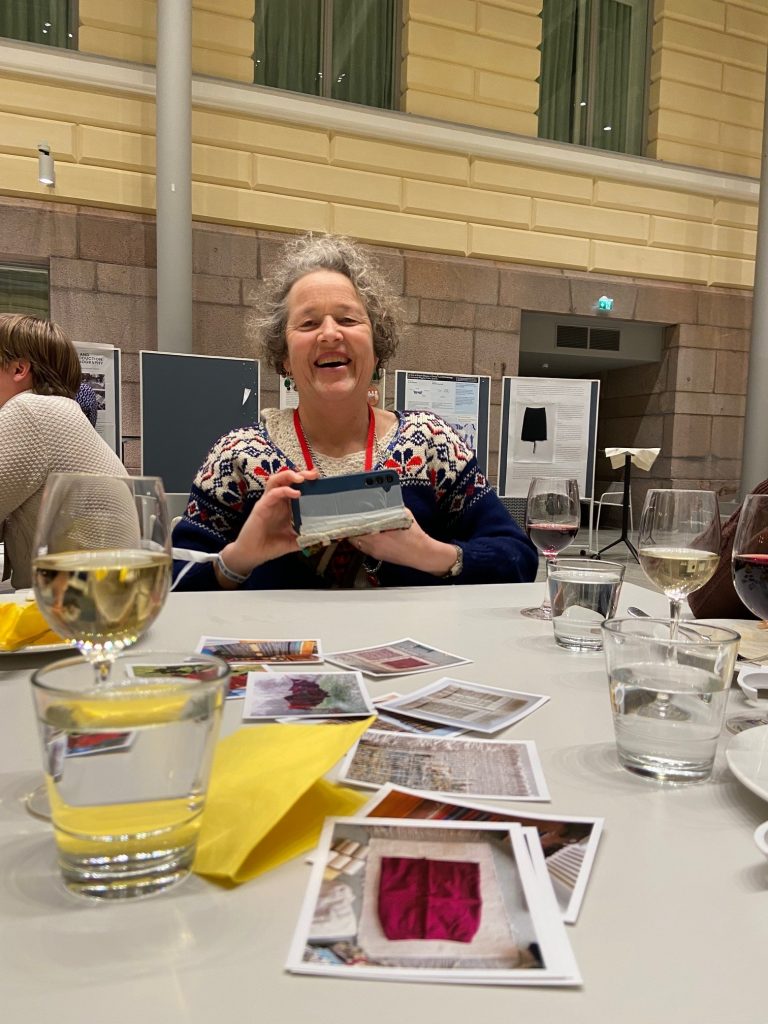
But pictures on the internet are not the same as on paper. Furthermore, the digital world has a lot of other characteristics. Spirited discussions followed over wine and dinner hosted by the university. Maybe this was his aim? Or maybe, as others pointed out, this lack of critique of digitalization pays off economically. Nobody was bored, truth be told, and it may be that the critique is connected to the high expectations ahead of his talk. It was a different experience for me and my talk. I am not only less known, but also mostly recognizable for my work with more culturally historical works with wool, washing clothes, bed linens and other kinds of unimportant objects.
With three sessions running simultaneously for two days from morning till evening, it was IMPOSSIBLE for me to see everything. In actuality, I could have been everywhere as everything was of interest. What’s more important than objects (and our relationship to them) is of course our relationship to each other. There was no lack in warm greetings and interesting exchanges, but for me one stands out, and that is my reunion with Mae Colburn.
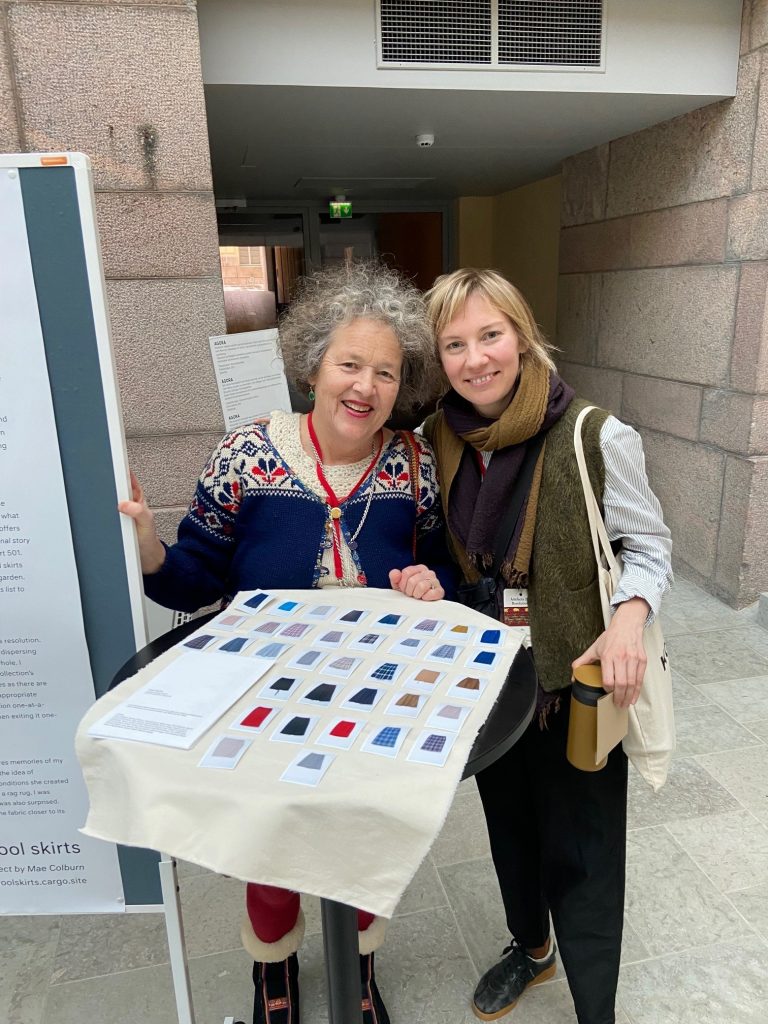
She contributed with a poster presenting her and her mom’s collection of 600 wool skirts – believe it or not – which was inherited from her grandmother. The skirts did not stay on the poster, but showed up in different places in the form of small square pictures with different related motifs. Mae had also brought a postcard that showed a weave of a skirt made of the skirt fabric, melting the motif and the material together. Mae lives in New York and works as an artist in the crossroads between practicing weaving and academia. Since working at SIFO 15 years ago, she has developed into an artist and kept her fascination for wool (click here to check out the project’s webside woolskirts.cargo).
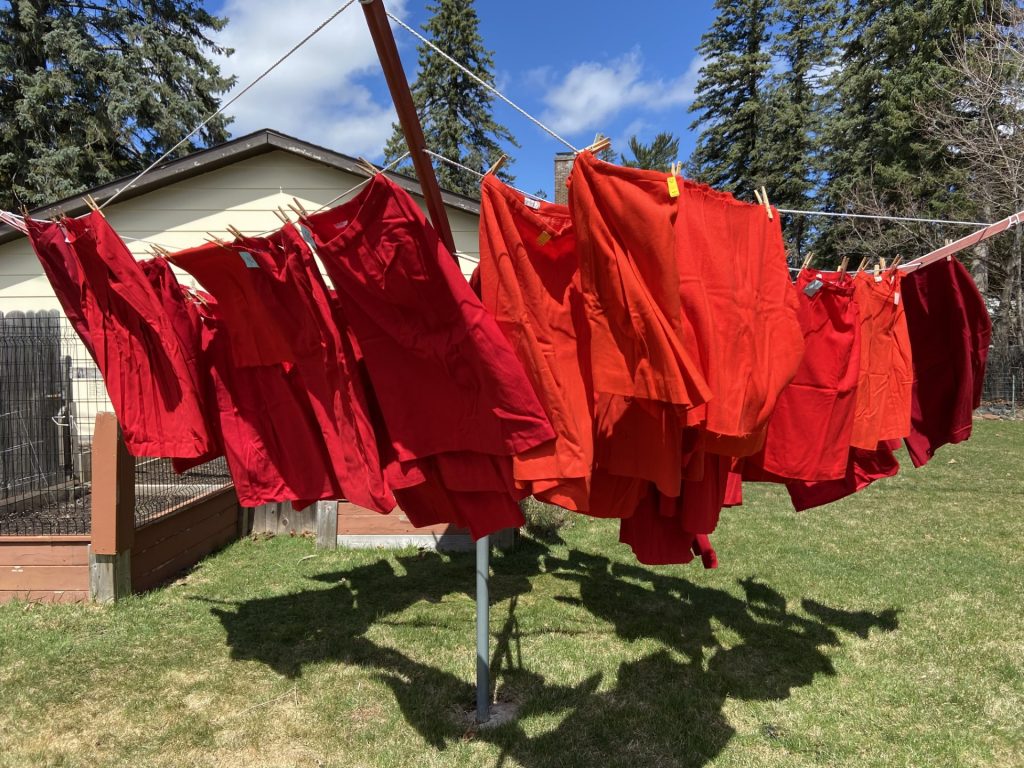
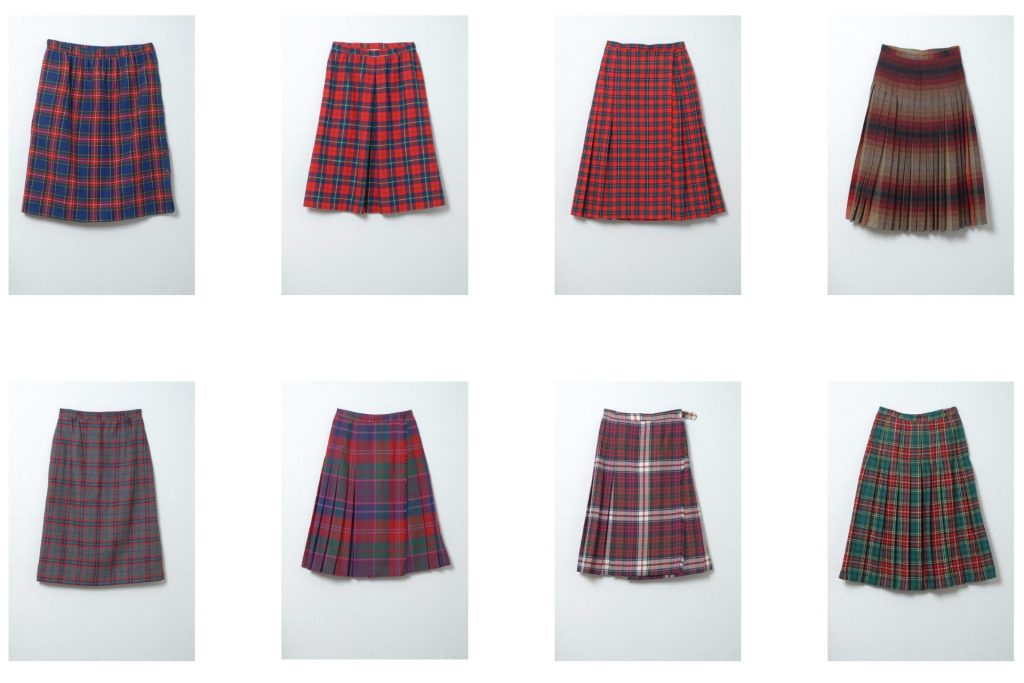
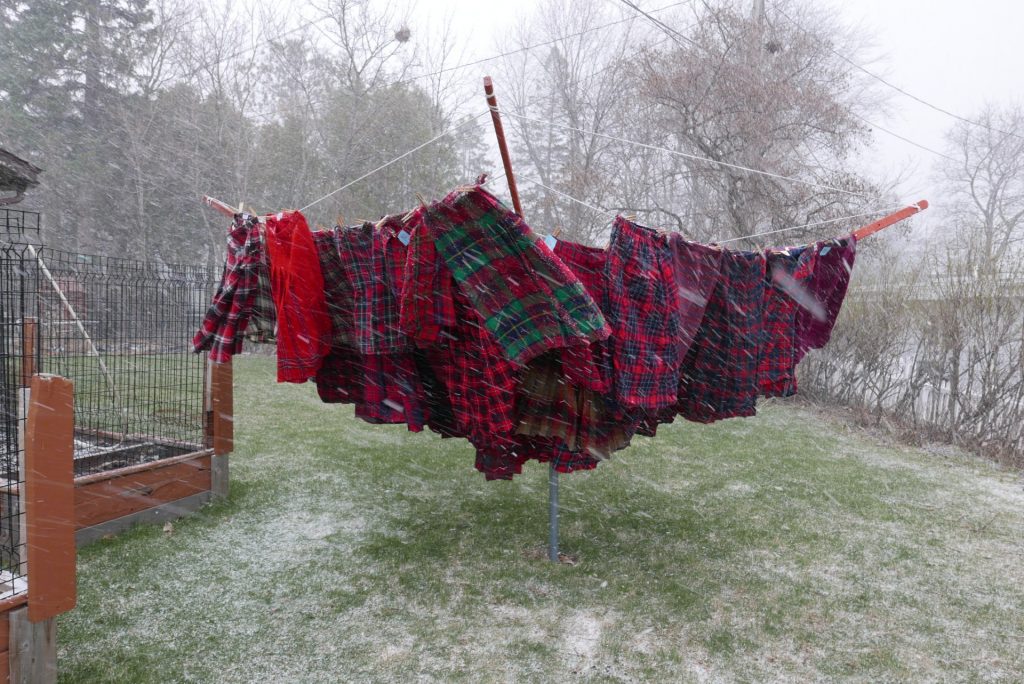
One of the many things Mae did all those years ago was compiling a bibliography on wool, of course it is still readable but maybe used too sparingly? (link here (clothingresearch.oslomet.no)) What it certain is that her time at SIFO has changed her and us, and what is often forgotten is how important such meeting are and how lucky we are to be able to work together.
– Ingun